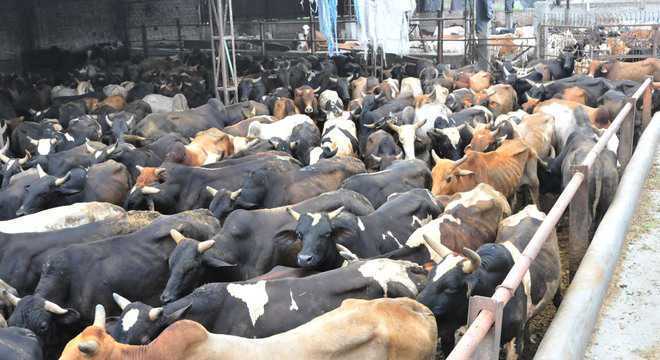Desi cattle count at all-time low
Parvesh Sharma
Tribune News Service
Chandigarh, August 6
Amid all talk about the protection and promotion of indigenous cattle (desi cow) breeds in Haryana, their population in the state has fallen to all-time low. In a letter to the Principal Secretary, Animal Husbandry Department, Director General Dr GS Jakhar has urged him for urgent measures for conservation and development of the indigenous cattle breeds.
During the 2007 cattle census, 9.86 cows of total 15.52 lakh were found to be of indigenous breeds. The last census in 2012 showed that the cattle population increased to 18.08 lakh, while the count of indigenous breeds reduced to 8.12 lakh. However, the population of crossbreed cattle increased to 9.96 lakh. The count of indigenous breeds has fallen by 1.74 lakh despite government claims of promoting these.
“Though there are quality genetic resources, the number of indigenous cows has not increased as per expectation because our farmers are not fully aware about the advantages of the local breeds. The maintenance cost of the indigenous breeds is less than that of the crossbreed,” said an officer.
He told The Tribune that lack of concerted efforts in the past for genetic improvement of the indigenous cattle breeds led to a gradual decline in their population. The government should take necessary steps to enhance the productivity and population of the indigenous breeds such as Hariana and Sahiwal as only these could survive in the tough weather conditions of the state. Jakhar confirmed that the population of the indigenous breed cows is at all-time low.
“We have launched many schemes to promote the local cow breeds and are hopeful that their number will increase drastically in the near future. With consistent efforts of our teams, there is a perceptible change in the mindset of farmers and they have started rearing local breeds,” said Jakhar.
The Animal Husbandry Department has launched a scheme to pay incentives of Rs 10,000 to Rs 20,000 to the owners of high milk producing cows in different categories and providing other required facilities to farmers.










